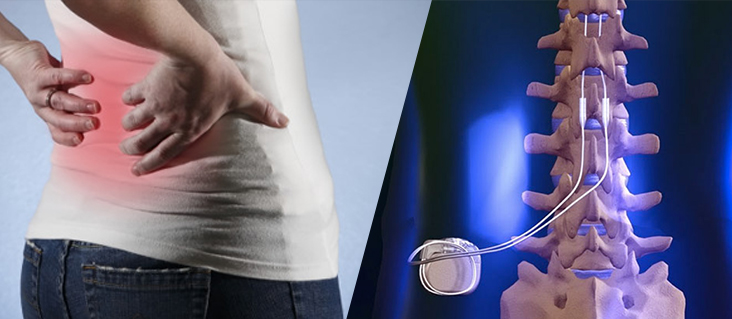
Spinal Cord stimulation for the treatment of chronic pain is useful for those patients who have failed conservative management. It involves the implantation of a stimulation catheter near the spine. Patients with neuropathic pain, or pain caused by damaged nerves, are the ideal candidates for this procedure.
The mechanism by which spinal cord stimulation works is not well understood, but is best explained by the “Gate Theory” of pain. This theory proposes that stimulation of large nerves by electricity can close the gate for pain impulses to reach the spine.
During placement of this catheter, the electrodes are placed into the epidural space at a level in the spine close to where the pain impulses enter the spinal cord. Patients experience paresthesia, or tingling, in the area of pain. This can substantially reduce the perception of pain by the patients.
Usually, a patient is given a trial of stimulation to assess how well it works. It the trial is successful, then the spinal cord stimulator is implanted permanently. Usually a 50% or greater reduction in pain from the trial is needed in order to justify the permanent stimulator implant.
Complications can occur during the trial or permanent placement of the stimulator. Hardware malfunction, lead migration, and breakage are among some of the issues. Infection is always a concern when implanting any object.
Finally, spinal cord stimulation for the treatment of chronic pain is a useful modality of treatment. It is only used after all other conservative modalities of treatment have failed. It has the potential to alleviate pain where all other modalities have failed. It is not without risk and should be undertaken only by a trained pain management professional.